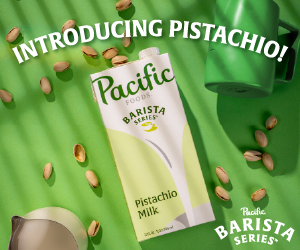(Photo: courtesy of Mizuba Tea Co.)
[T]hink iced tea is a pedestrian way to move through lower-quality teas? Not so! Just as high-quality, hot tea elicits an infinite world of flavor experiences, the same care and attention to your cold cup of tea will surprise your palate. Take Japanese teas for example. Just when you think you’ve tasted all that sencha, houjicha, matcha, or kukicha has to offer, you’ll find there’s nothing more refreshing than a tall, icy glass of straight, umami-filled iced tea.
Thoughts of Japan and its tea inevitably evoke images of chanoyu, the nation’s iconic tea ceremony. However, Japan has a rich history of iced tea, and not just the crisp bottles out of the vending machines (which, by global vending-machine standards, can be excellent). According to farmers near the city of Uji, iced tea is a tradition that started with the cool, clean, and pure waters that run through the countryside. Brewing bright senchas or deeply verdant gyokuros with the cool water refreshed those who were weary from the climate’s many hot and humid days. Since then, beautiful recipes for iced tea have developed, with each methodology extracting the tea’s nuances differently. Get ready to be enchanted by, and to enchant your customers with, a sweet, oceanic, deliciously syrupy-yet-bright cup.
Let’s start with what is more and more often found in coffee shops: iced matcha. Since 2013, I’ve been training our café partners on using the traditional chasen, or bamboo matcha whisk, to aerate matcha into a perfectly creamy froth. However, my secret advice is that matcha can actually be made with cold water! You may use your chasen to whisk matcha directly into cold water, but we also love what we’ve dubbed our cocktail method: take ½ to ¾ teaspoons of sifted matcha and shake vigorously (and I mean vigorously) with 4 to 7 ounces cold water. Or for a bigger batch, you could take one teaspoon sifted matcha with 8 to 16 ounces cold water in a tightly lidded mason jar or thermos. The classic thick, creamy froth should settle at the head. Enjoy neat, or pour it on the rocks. We’ve also made a signature, slightly sweeter version popular up and down the West Coast: whisk one teaspoon matcha with local honey, to taste. Add 160–175-degree water so the honey dissolves while whisking. Pour over ice. If honey isn’t your preference, agave or simple syrup dissolves very readily into matcha.
Now to the iced loose leaf teas, and our three main methods. To enter the world of Japanese iced tea, we recommend starting with well-made sencha. The deeper steamed (fukamushi) the sencha is, the milder in taste and syrupy in mouthfeel it is likely to be.
Method one: hot tea on ice. It’s quite common, and completely acceptable, to brew tea hot and pour it over ice (plus, it’s efficient for to-order menus at cafés). The trick is to watch the proportion of ice to tea, so the ice does not water down the tea. To get the full-bodied flavor of the tea, it’s advisable to brew the tea quite strong: use a slightly higher dosage of leaves (a tablespoon to 1 ½ tablespoons as opposed to a teaspoon); about 30 seconds to a minute more than recommended hot brewing time to make a concentrate. It’s easy to experiment and find your favorite recipe and brew time, but try 7 to 8 grams of tea leaves to 175-degree water. Steep 2 to 3 minutes for sencha, gyokuro, or genmaicha, and longer (4 to 5 minutes) for less astringent houjicha and mugicha (not actually tea, but barley!) teas. Pour over ice, and enjoy the crackling, pachi pachi sounds of the ice that herald summertime.
Method two: the highly popular cold brew. Easy to make, easy to store, easy to keep in large batches. The catechins and caffeine in tea do not extract as easily in cold water, so you’ll enjoy a mellow, smooth flavor. Our favorite teas to cold brew are houjicha, bancha, or mugicha (the latter our number-one drink to pair with ramen). A favorite recipe: place 20 grams of bancha or houjicha in a half-gallon mason jar. Fill with cold water, and seal the lid tightly. Flip the jar once to disperse the leaves, and store the jar in your refrigerator overnight. Additionally, try 14 to 20 grams Japanese tea leaves to 40 to 60 ounces cold water in a jar. Shake your jar to disperse the flavor evenly before straining and serving. For your customers who prefer a decaf option, try making cold brew with mugicha tea bags: add one tea bag for every half gallon of water, and chill for 2 or more hours.
Method three: the most noble and highly aesthetic way to enjoy authentic Japanese iced tea is to brew with ice. This method may require patience, and it likely doesn’t fit in a café, but it’s perfect for a luxuriously languid afternoon. Place 1 to 1 ½ tablespoons of your highest grade of sencha, gyokuro, or—highly recommended here—tencha or tencha karigane leaves inside a glass teapot. Fill your pot ½ to ¾ full with ice. Let the ice thaw naturally, at room-temperature. Do not heat the pot! You’ll be rewarded with a lovely, smooth, umami-filled brew. Doctor with more ice should it be too strong. If you’re sharing your pot, the tea is traditionally poured alternately between two glasses so the taste is equally bodied in each.
Once you’re comfortable with these brewing techniques, apply them to gyokuro, kukicha, tencha, konacha, genmaicha, or your current favorite tea, and enjoy the umami on ice.
—Lauren Purvis owns Mizuba Tea Co.















